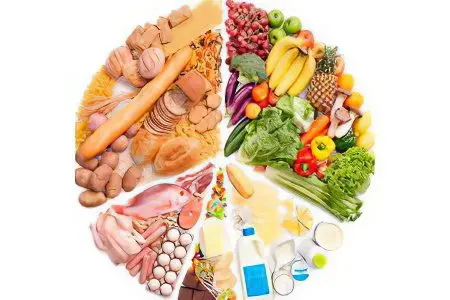Chromium and zinc
Chromium is one of the most important elements for the normal functioning of the body. It is especially necessary for people suffering from diabetes to normalize blood glucose levels. If the level of chromium is normal, then the risk of developing both diabetes and atherosclerosis is minimized. After all, it is its deficiency that makes a person consume carbohydrate foods, raising blood sugar.
An element such as zinc affects the work of pancreatic hormones. This metal is necessary in small quantities for both healthy people and those suffering from diabetes. Zinc regulates insulin production and prevents its overproduction.
Products-record holders for the content of chromium
In order for chromium to be best absorbed by the body, it is necessary to include foods rich in this element in your diet.

The undisputed leaders in this regard are:
Beef liver. There is a lot of chromium in other types of liver – chicken and pork, but it is in beef that it is the most.
Brewer’s yeast.
Hard cheeses.
Most cereals.
Chicken and turkey, as well as chicken eggs.
Apples, nuts and mushrooms.
Eggs.
Tomatoes.
At the same time, prolonged heat treatment, as well as the preservation of vegetables and fruits, leads to the fact that chromium from them “volatilizes”. Therefore, it is necessary to expose them to any impact as little as possible.
Daily dosage of chromium for children:
1-3 years – 11 mcg;
3-11 years old – 15 mcg;
11-14 years old – 25 mcg;
14-18 years old – 35 mcg.
Daily dosage of chromium for women:
From 18 years and older – 50 mcg;
Pregnancy – 100-120 mcg.
Daily dosage of chromium for men:
From 18 years and older – 60-70 mcg:
Athletes – 120-200 mcg.
Products-record holders for the content of zinc

Zinc can be obtained from foods such as seafood, seaweed, oysters, and wheat bran. However, not every person can afford to include expensive seafood in their diet. Therefore, it is worth paying attention to all the same beef liver and meat, eggs, cheese, peas and cereals. These are the same products in which there is a lot of chromium, so they are necessary for patients with diabetes mellitus, as well as specialized medicines.
Daily allowance for children:
0-6 months – 2 mg;
6-12 months – 3 mg;
1-3 years – 4 mg;
4-8 years – 5 mg;
8-13 years – 8 mg;
From 14 and older – 11 mg.
Daily allowance for women:
The amount of zinc needed to consume per day varies depending on the age and lifestyle of a person.
14-18 years – 9 mg;
From 19 and older – 8 mg;
Pregnancy period – from 12 to 13 mg;
The lactation period is from 11 to 12 mg.
Daily allowance for men:
With increased physical activity and excessive sweating, the need for zinc increases several times. Also, alcohol poses a serious threat to the amount of this mineral contained in the body.
From 14 years and older – 11 mg.
Selenium
When a person has a sudden sharp pain in the abdomen, accompanied by nausea and vomiting, this most often indicates acute pancreatitis. Doctors found that the introduction of selenium into the body can remove inflammation from the organ in a day. This is due to its pronounced anti-inflammatory properties, especially in combination with vitamin E.
Products-record holders for the content of selenium
In order for selenium to regularly enter the body and exert its beneficial effect on the pancreas, it is necessary to eat the following foods:
Product | Selenium content in products (mcg per 100 grams) |
Brazilian nut | 103-1917 µg |
Pork kidneys (fried) | 270 |
Lobsters (boiled) | 130 |
Oyster mushrooms (dried mushrooms) | 110 |
White mushrooms (dried) | 100 |
Tuna (canned) | 90 |
Coconut (pulp, shavings) | 80 |
Sunflower seeds | 53-56 |
Fistashki | 45 |
Salmon (baked) | 43 |
Mackerel (in brine) | 42 |
Salo (pork) | 20 – 40 |
Garlic | 20 – 40 |
Wheat | Until 40 |
White bread | 18 – 25 |
Brynza | 25 |
Sea fish | 2-20 |
Corn grits | 18 |
Manka | 15 |
Wheat flour | 8-15 |
Buckwheat | 14 |
Tuna | 12 |
Oat flakes “Hercules” | 12 |
Chick-pea | 12 |
Wheat bran | 11 |
Eggs | 7-10 |
rice | 10 |
beans | 9 |
Peas | 8 |
Soy | 6 |
beef liver | 4-6 |
Beef | 1 – 3,5 |
Breast milk | 1 — 3 (100 ml) |
Sulfur
It is important for patients with diabetes to remember such an important element as sulfur. This is due to its ability to lower blood glucose levels. Sulfur takes part in the synthesis of insulin, in the metabolism of carbohydrates.
Patients are prescribed injections containing sulfur (methylsulfonylmethane), which stabilizes blood sugar levels. With a lack of this element, a person has a pathological craving for glucose-containing products!
Products-record holders for sulfur content
Product | Selenium content in products (mcg per 100 grams) |
Poppy | 640 |
Egg powder | 624 |
Sturgeon caviar | 382 |
Hot smoked bream | 328 |
Caviar gorbushi, go | 306-324 |
Cecils | 283 |
Pork tongue (boiled) | 262 |
Hard cheeses | 260 |
Turkey | 250 |
Turkey liver | 248 |
Soy | 244 |
Raw smoked sausage | 240 |
Beef liver | 239 |
Chicken, lamb, beef, pork, rabbit | 220-230 |
Smoked mackerel | 230 |
Horse mackerel, pike, sea bass, cod | 200-210 |
Quail eggs | 200 |
Sardine, turbot, flounder, flounder | 190-200 |
Green pea | 190 |
Chicken egg | 175 |
Milk and dairy products | 28-35 |
Although sulfur is found in many foods, it is often not enough to normalize blood sugar. Therefore, special attention should be paid to products of plant origin, such as: apples, garlic, cabbage, plums, grapes, horseradish, peppers, mustard, radishes.
There is a lot of sulfur in black and red caviar, in some types of meat (in beef, pork, rabbit and lamb), in fish (in horse mackerel, flounder, catfish, hot smoked bream, pike, sardine, chum salmon, cod, pink salmon). It is also worth consuming eggs, milk and hard cheese.
Manganese is very important in diabetes

Manganese plays a crucial role in the onset of diabetes. Its deficiency contributes to the development of the disease. A sufficient amount of manganese contributes to the normal synthesis of insulin, regulates the process of glucogenesis.
In addition to the fact that a lack of manganese causes type 2 diabetes, this condition is fraught with such a serious complication as fatty liver.
The daily requirement for manganese is:
for an adult 2,5-5 mg
for pregnant and lactating mothers 4-8 mg
for children 1-3 years old – 1 mg, from 4 to 6 years old – 1,5 mg, 7-15 years old – 2 mg, over 15 years old – 2,5-5 mg
Record-breaking products for manganese content
In order to avoid such a formidable disease as diabetes mellitus and related complications, it is necessary to obtain manganese not only from vitamin and mineral complexes, but also from food.
To do this, you should include in your menu:
Blueberries
All seafood, but most of this element is found in mussels.
Nuts. The leaders in this regard are: hazelnuts, almonds, pecans, walnuts, pistachios and cashews.
It is useful to eat pumpkin seeds, add flax, sesame and chia seeds to dishes.
You should not give up bread, but you need it to be made from whole grains.
Tofu.
Such types of beans as: white, lima, adzuki.
If you turn to vegetables, then spinach, Peking and curly cabbage, chard will be useful. You should not give up beet tops and amaranth.
Black tea would be helpful. However, they should not be overused.
So, for the normal functioning of the pancreas, for the prevention and treatment of diabetes mellitus, to maintain normal insulin in the blood, it is necessary to adhere to a certain menu with products containing: zinc, chromium, selenium, sulfur and manganese. Each of these elements plays a certain role in the human body, helps to cope with diseases and strengthens the immune system. In many products, for example, in seafood and in the liver of animals, you can find the entire list of these useful components. But an excess of sulfur, zinc, chromium, selenium and manganese will exacerbate a number of diseases and health problems. Therefore, the menu of a person with diabetes should be as balanced and varied as possible.